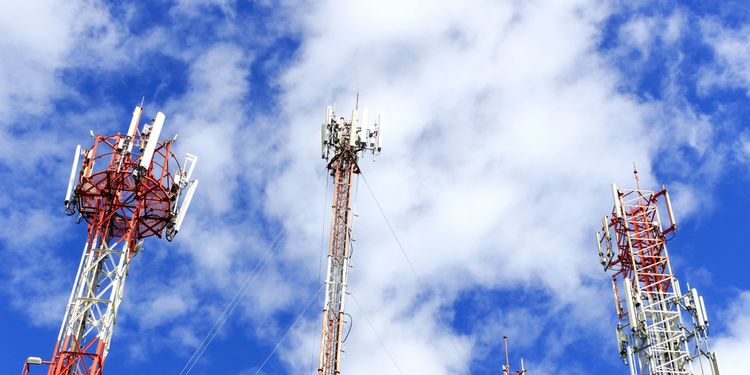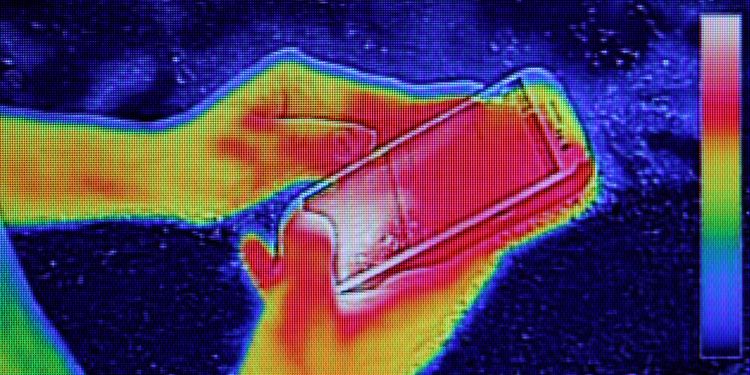Are Cell Phones the New Cigarettes?

Very few people don’t have cell phones (smart or otherwise) these days. The next time (or the first time) you’re walking around New York City, just take a look around. People are literally bumping into one another, with their heads buried in their phones. And this isn’t exclusive to NYC- this goes on everywhere. It happens in restaurants, shopping malls, sporting events— everywhere! While we could dig into the social impacts of cell phones for days on end, what about the physical health impacts?
What if these devices turned out to be harmful to your health? Everyone already knows that texting while driving or playing Pokémon Go when crossing a busy intersection can lead to serious injury or death. But that’s what you might call “the distraction factor.”
Take another look around at all those people with their phones, and now imagine that instead of being on their phones, they were all smoking cigarettes. Makes for a shocking image, right? So here’s the ultimate question: What if cell phones are the new cigarettes?
In other words, what if the devices themselves are inherently harmful to your health? Given how many people are literally addicted to their phones, this is something most people would rather not think about.

What are EMFs and Are They Harming Your Health?
Any time electricity is moved around through wires or used in an appliance, an electromagnetic field (EMF) is produced. Because it radiates out in waves, it’s called electromagnetic radiation. EMFs vary widely in strength across the electromagnetic spectrum. At the weaker end of the spectrum are extremely low frequency (ELF) electromagnetic fields produced from the electrical power supply and most of the appliances we plug into it.
Moving up the spectrum in strength are intermediate frequency (IF) electromagnetic fields produced by computer screens, anti-theft devices, and security systems. Then comes radio frequency (RF) electromagnetic fields from radio, television, radar, and cellular telephone antennas used to transmit information across long distances, WiFi networks, remote controls, mobile phones, Bluetooth devices, and microwave ovens.
All the EMFs mentioned so far, along with both infrared and visible light, are called non-ionizing radiation. They aren’t strong enough to break apart molecules. Somewhere in the ultraviolet range of the electromagnetic spectrum is when you cross over into ionizing radiation, where the energy is very potent and can break molecular bonds. This is when you get into diagnostic and therapeutic radiation that involves x-rays and some ultraviolet and gamma rays that can cause cellular and DNA damage, including burns, radiation sickness, cancer, and genetic damage.
Cell phones are in the non-ionizing end of the electromagnetic spectrum. The radiation they emit is not strong enough to break molecules apart in damaging ways. But does that automatically mean we’re safe? Some people believe there are effects on human health from electromagnetic radiation even at the weakest end of the spectrum.

Do Cell Phones Cause Cancer?
The latest research shows disturbingly strong evidence that intensive use of cell phones increases the risk of brain cancer, benign tumors of the auditory nerve, and cancer of the parotid gland (the salivary gland in your cheek near your ear). The World Health Organization (WHO) is at least a couple steps ahead of the US government on this. Its International Agency for Research on Cancer has now classified cell phone and WiFi radiation as a Class 2B “Possible Carcinogen.”
So what’s going on here? If even non-ionizing electromagnetic radiation can have such severe health effects, how can the government declare it to be “safe?” The research into the long-term effects of non-ionizing radiation is still relatively new, and even if confirmed, the federal government tends to be slow when enacting new regulations. There’s always a significant lag between the research and government action. And remember, back when the link between smoking and lung cancer was being revealed, there was a ton of resistance to the findings.
Do Cell Phones Cause Male Infertility?
What does carrying a cell phone around in your pocket— meaning quite close to your testicles— do to male fertility? Although more research is needed, it appears that potential effects include erectile dysfunction, degraded sperm, and reduced sperm counts, all of which can contribute to infertility issues. In short, cell phone radiation places oxidative stress on your sperm.

Ways to Protect Yourself from Cell Phone Radiation
The science and research related to the health effects of cell phone radiation are still considered by many to be inconclusive. For every study that finds a connection, there are just as many that find no connection at all. But the studies also vary widely in their quality, design, and care in controlling for confounding variables.
What you do with all this information is ultimately up to you. An increasing number of people are deciding to err on the side of safety and want to know what they can do to protect themselves from cell phone radiation. This is especially important for children, whose still-developing bodies are more susceptible to negative impacts. Here’s the run-down:
Get grounded. When you make physical contact with the earth by having your feet on the planet’s surface, you become an extension of the earth’s global electric system. This staves off unwanted electric fields and voltage in the body. It’s called “Earthing,” and its benefits have been extolled in lectures on electromagnetism by Nobel Prize winner Richard Feynman.
Keep your distance. Whenever possible, don’t have your phone “on” you. And if you do, put it in “airplane” mode and just turn it on to check it every once in a while. You may be surprised how little you miss— or at least anything of any real importance. And even small distances make a big difference, so texting actually greatly reduces your radiation exposure compared to speaking on the phone with it next to your head. Because of this, Bluetooth ear devices are even worse than phones. Opt for speakerphone instead.
Eat right. The main culprit behind electromagnetic radiation is the potential production of free radicals in the body. The good news is that you can boost your body’s ability to clean out those free radicals by eating a diet of foods with high ORAC (oxygen radical absorbance capacity). Get plenty of iodine, vitamin D3, B-complex vitamins, melatonin, omega-3 fatty acids, selenium, and zinc. Try blueberries, cruciferous vegetables, pecans, asparagus, pomegranate seeds, rosemary, walnuts, dates, prunes, cinnamon, broccoli, cilantro, spirulina, noni, and holy basil.

Unplug and disconnect. In the home, turn off appliances when not in use, including your WiFi network, which produces even more electromagnetic radiation than your cell phone. Minimize the number of electrical devices and appliances in your bedroom, because they can interfere with your sleep. And all of these precautions are even more important where children are concerned. Things that should be absolutely out of the question: Wireless pacifiers with the ability to monitor a baby’s temperature or wireless diapers that alert you when junior needs changed. WiFi and kids are a combination better avoided.
Summary
When it comes to whether or not your cell phone is causing you harm, it’s all about exposure. The more you have it on near your body, the greater your risk of experiencing negative health consequences. Four simple approaches you can take to protecting yourself include unplugging, keeping your distance, getting grounded, and eating a high-ORAC diet. You don’t have to try and survive without your phone entirely, you just have to be smart about how you use it.
